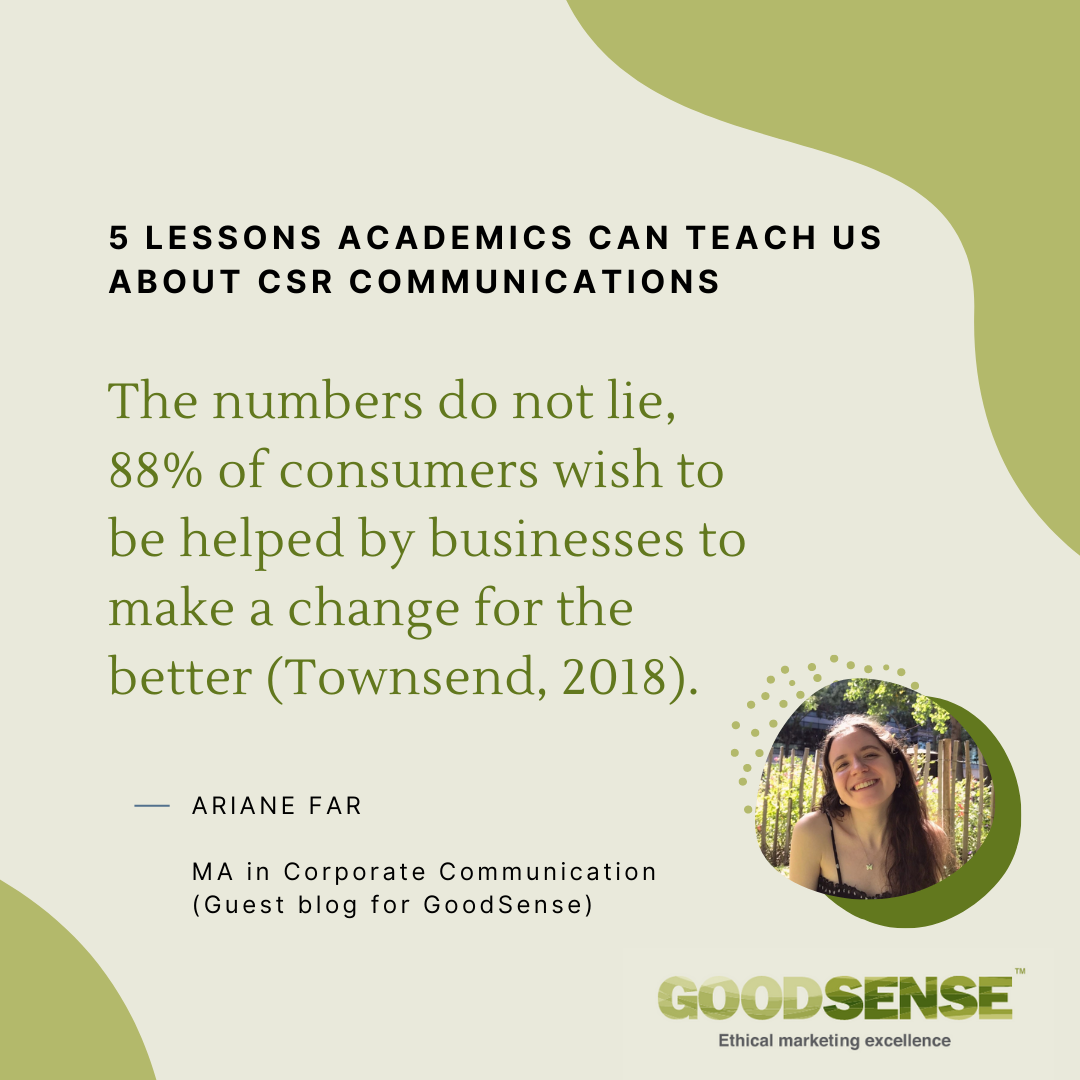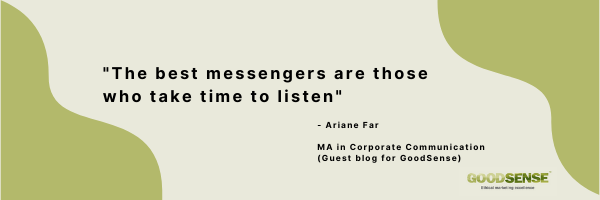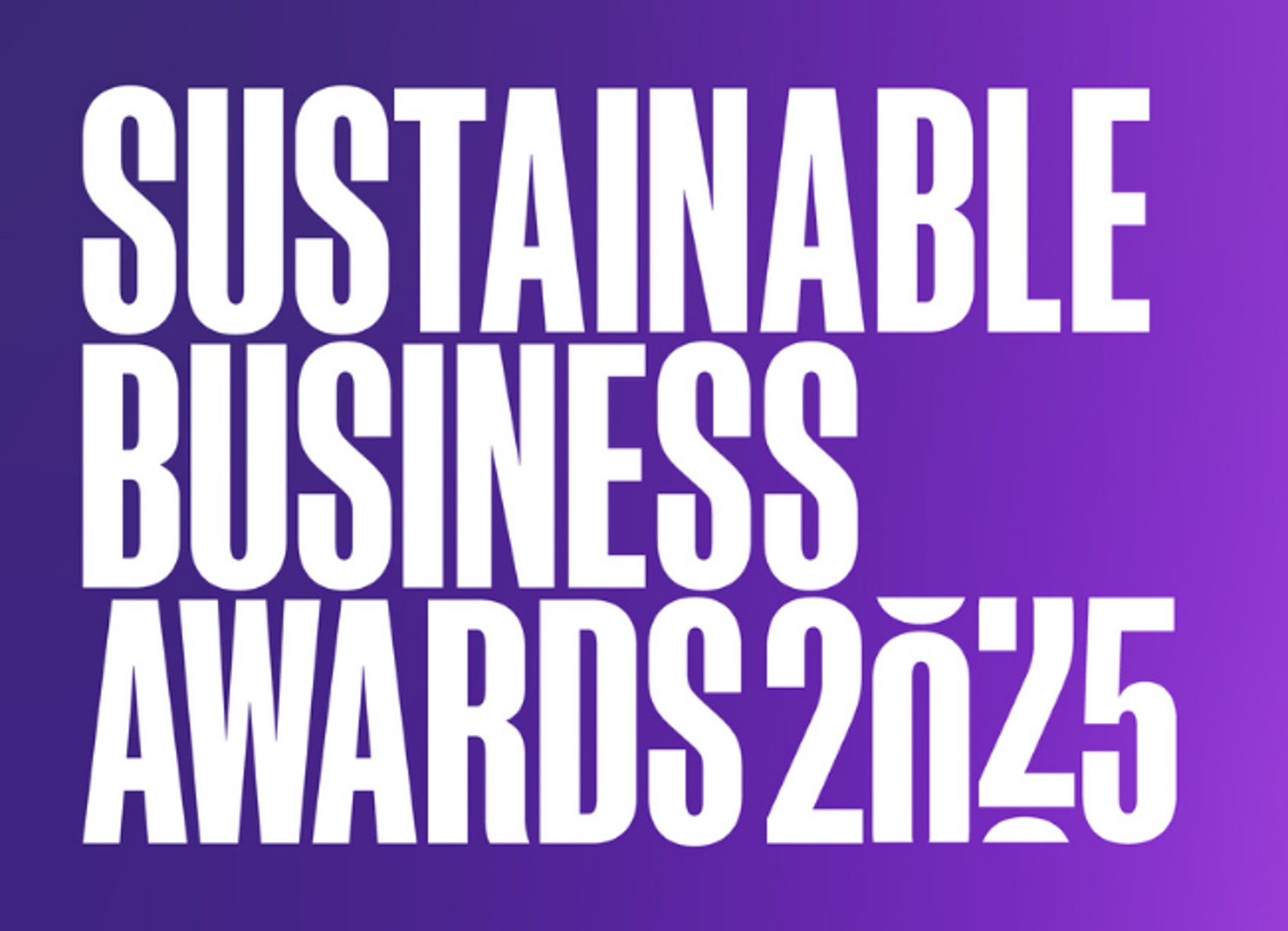Ariane Far got in touch with me last year from lockdown at University in Leeds, UK, where I studied. With an impressive track-record in sustainability actions and studies, Ariane impressed me with her drive for building a career in communicating for good and we enjoyed a great zoom-call exchange of ideas. Ariane has shared these insights from her studies with thoughts for how they can inform our pro marketing work.
They include how committed ‘greenies’ really want to hear intrinsic benefits; communications where you inspire them around your values-based work for the common good. Whereas less committed need a mix of intrinsic communications and extrinsic benefits, where you answer their more traditional ‘what’s in it for me’ questions.
I hope you enjoy! And thanks Ariane for the insights and generosity!

The numbers do not lie, 88% of consumers wish to be helped by businesses to make a change for the better (Townsend, 2018). Indeed, in corporations lies a forceful power to support new directions alike the current ethical transition.
Yet, a wish for more sustainable communications does not necessarily mean that any would be well received, as shows the recent Meridian hiccup in New Zealand- the brand having been called off for unsupported green claims.
When in doubt, the literature can often provide very relevant insights on how to deliver appropriate CSR communications:
1.Your communication plans are dictated by the consumer’s involvement (Edinger-Schons et al., 2018; Moon et al., 2016).
As a point of fact, consumers which are highly involved with the green lifestyle would rather hear intrinsic communication, while for the less connected ones a mix of the two is more beneficial (Edinger-Schons et al., 2018).
Moreover, predispositions to green messages also impact how the audience would prefer the message to be framed: positive and negative for those who do have a prior interest in the cause, yet more negative for those with none (Moon et al., 2016).
2.Do not overload your message with numbers (Gleim et al., 2013)
Indeed, when it is filled with cues, having to go through a high number of numerical information can be found tiring, and verbal information is preferred (Gleim et al., 2013).
3.Your consumers’ personality does change their CSR involvement (Tang and Lam, 2017).
For instance, Tang and Lam’s (2017) study has shown that the more travellers were assessed to be extroverted and agreeable, according to the big five personality types, the more likely they were to pay for green hotels
4. Yet, it is possible to engage even with those preoccupied with other things (Vermeir and Verbeke, 2008)
As the 2008 study underlined it is achievable to relate to high-achievers target markets, less focused on ethical questions, by relating the idea of a sustainable product to accomplishments (Vermeir and Verbeke, 2008)
5. At the end of the day, your credibility first depends on the alignment of your CSR with your core business and offering (Bhattacharya and Sen, 2004)
Consumers only reply positively to CSR if it is well aligned with the companies’ missions and values. Thus CSR involvements with no real change in the business actions can come at high risk for the firm and should be avoided (Bhattacharya and Sen, 2004)

All in all, this shows that the best messengers are those who take time to listen, and relate their purpose to the target audience. The CSR literature is a great place to start diving deeper into this topic as it is soaring worldwide. However, there are many other areas of our craft left to explore, like the inclusivity of sustainable communications or the strengthening of the public services’ voice.
About the author
Ariane Far is a Corporate Communications, Marketing and PR MA student at the University of Leeds in England. She specializes in CSR Communications and has experience in public engagement for green initiatives in two languages (French and English). Combined with her Bachelor’s in Economics & Management, she hopes to apply her postgraduate studies to reducing the attitude-behaviour gap in sustainability through communication or policymaking.
References
Bhattacharya, C.B. and Sen, S. 2004. Doing better at doing good: When, why, and how consumers respond to corporate social initiatives. California management review. 47(1), pp.9–24.
Edinger-Schons, L.M., Sipilä, J., Sen, S., Mende, G. and Wieseke, J. 2018. Are two reasons better than one? The role of appeal type in consumer responses to sustainable products. Journal of consumer psychology: the official journal of the Society for Consumer Psychology. 28(4), pp.644–664.
Gleim, M.R., Smith, J.S., Andrews, D. and Cronin, J.J., Jr. 2013. Against the Green: A multi-method examination of the barriers to green consumption. Journal of retailing. 89(1), pp.44–61.
Moon, S., Bergey, P.K., Bove, L.L. and Robinson, S. 2016. Message framing and individual traits in adopting innovative, sustainable products (ISPs): Evidence from biofuel adoption. Journal of business research. 69(9), pp.3553–3560.
Tang, C.M.F. and Lam, D. 2017. The role of extraversion and agreeableness traits on Gen Y’s attitudes and willingness to pay for green hotels. International journal of contemporary hospitality management. 29(1), pp.607–623.
Townsend, S. 2018. 88% of consumers want you to help them make A difference. Forbes Magazine.
Vermeir, I. and Verbeke, W. 2008. Sustainable food consumption among young adults in Belgium: Theory of planned behaviour and the role of confidence and values. Ecological economics: the journal of the International Society for Ecological Economics. 64(3), pp.542–553.













